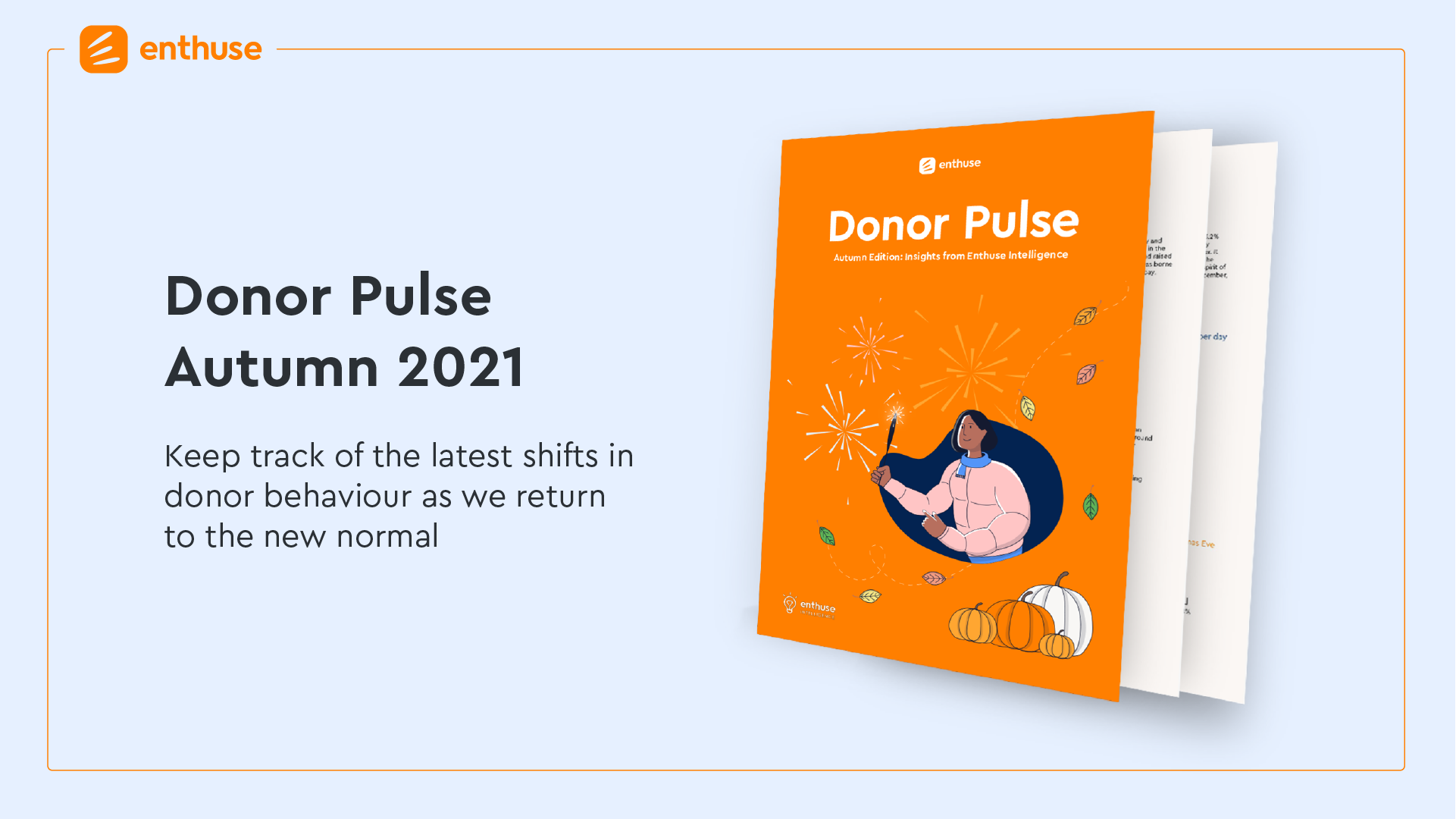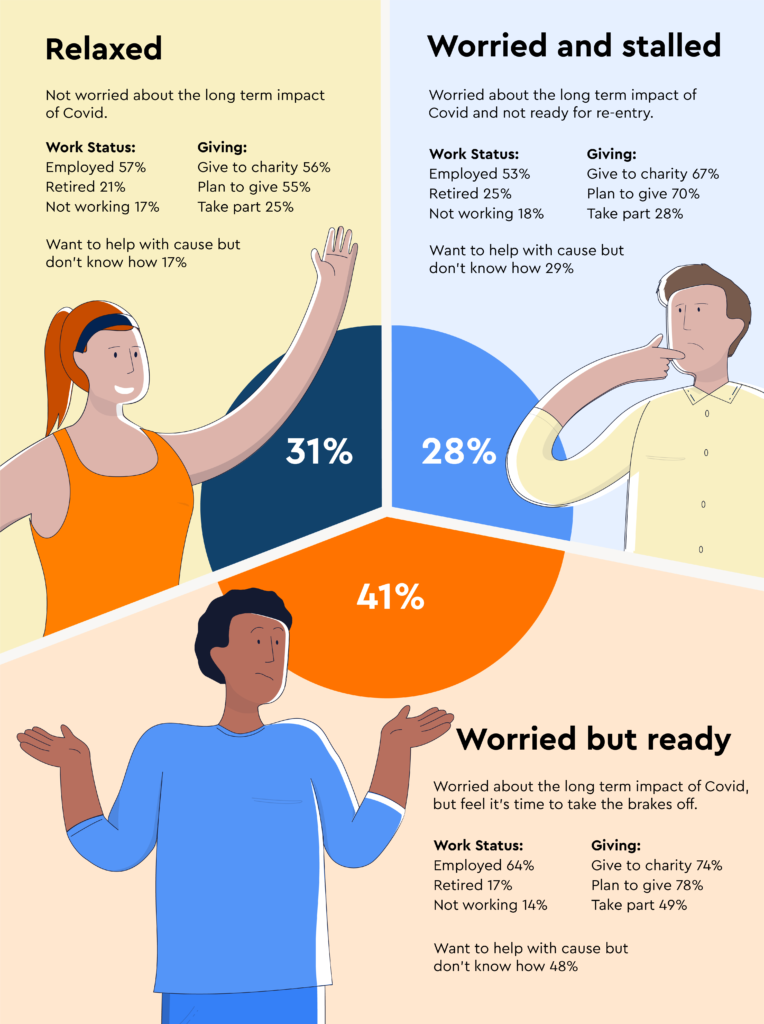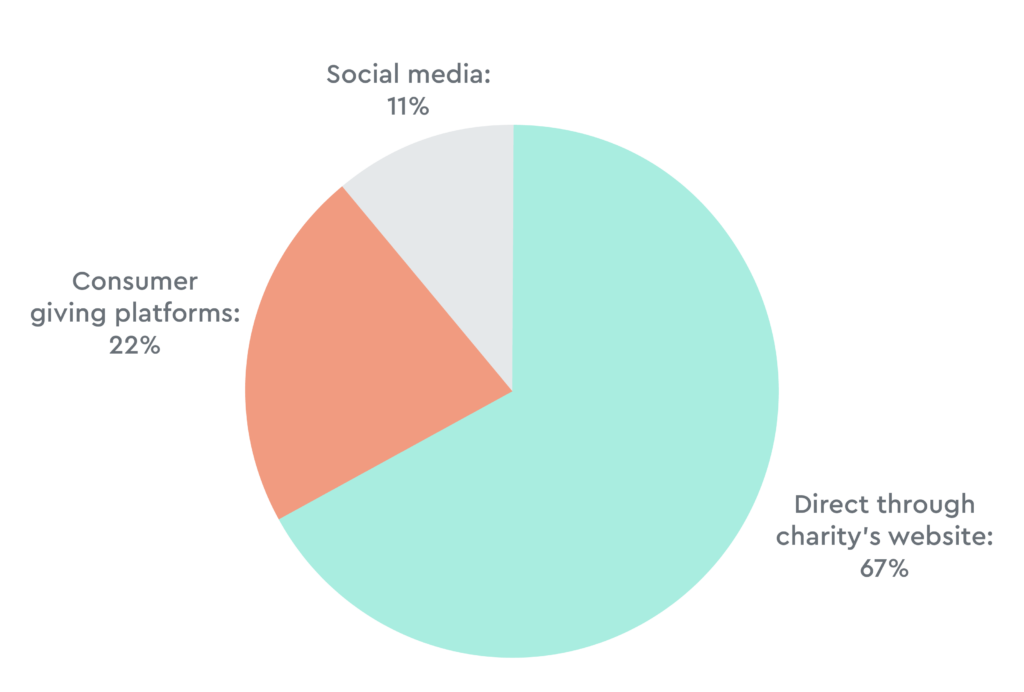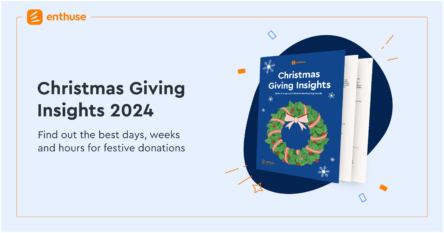
The latest edition of our quarterly Donor Pulse research explores the public’s differing Covid mindsets and how this has impacted attitudes towards charities, fundraising and giving habits over the last three months.
At the time of writing, furlough and the majority of Covid restrictions have come to an end. This does not of course mean that the risks of the virus are completely behind us, and people’s feelings about a return to pre-Covid behaviours are understandably complicated.
More than two thirds (69%) of the public say they are worried about the long term effects of the pandemic on life in the UK. However, 56% state that they believe it is time for the UK to move on.
Indeed, two fifths of people are both concerned about the long term effects of Covid on the UK, while also feeling it is time to move on – the ‘worried and ready’. An additional 28% of people are worried and not yet ready for life to return to normal. This leaves a remaining 31% of people who are relaxed and not worried about the impact of Covid on the UK in the long term, and happy to get on with their pre-pandemic lives.
Charities need to consider these different mindsets in their campaigns and appeals. Making sure that the ideas and messaging accommodate the ‘worried but ready’ will be particularly important. Although they want to move on, they still have concerns so there is a fine balance to be found that is encouraging but supportive, particularly with the backdrop of rising cases. Appealing to this mindset and showing how they can help good causes in the right way is the most likely route to successful fundraising campaigns.

Feelings on fundraising
The good news for charities is that there are signs that people are feeling more confident about day to day life, particularly in terms of supporting charity events. In fact 36% of people are likely to take part in a charity event in the next six months – this is a rise of 7% from February. There have been increases in willingness to participate in fundraising events across the board – but most marked is the 18-24 age group rising by 14% (from 43% to 57%) and the 65-80 age group doubling (from 9% to 18%).
The study indicates that participation could be increased further, with 36% of the public saying they would be more willing to take part in a mass participation activity if there was a virtual option. While there is still some trepidation about events, there is a clear building of confidence among the public – underlined by the strong turnout for the London Marathon.
Levelled off giving
For the first time during the pandemic, the report shows that the number of people donating has gone down in the last three months, with the overall figure dropping from 69% to 66%. While there has been a slight rise in the number of over 40s donating from 62% to 64%, there has been a significant drop in under 40s giving from 81% to 70%. The combination of the end of furlough and the opening up of more leisure opportunities have led to under 40s having less disposable income to spend on donations.
Despite the overall drop, the number of people donating to multiple charities has mostly held up, with 45% of the public giving to two or more charities in the last three months – this is down just 1% over the last quarter. The people who support the widest range of charities remain Gen Z, with nearly two fifths (38%) giving to three or more causes in the last three months – by comparison only a fifth of Baby Boomers gave to the same number of charities.
The study also looked at the impact of media sources on support for causes. 41% said they had seen a news story on TV in the last three months that made them want to support a cause compared to 39% who saw an online news story that provoked the same reaction. 32% said they had gone on to donate after seeing a cause featured on social media.
Direct donors
The end of most Covid restrictions has meant increased opportunities for cash donations, yet 49% of under 40s would prefer to donate online, and just 27% would prefer to use cash. This preference for online giving coincides with the news that ATMs are being used 40% less in the last two years. In total, 39% of the public has donated online in the past three months.
The research shows that the public want to donate directly to charities – 67% of online donors state this is their preferred way of giving. This is particularly significant for charitable organisations as direct donations through a cause’s website are greater in value. The average digital donation comes in at £34 but those direct through the site average £40.

81% of donors remember the name of the charity when they donate through the organisation’s site – only 60% do when using a consumer giving platform. This means that supporters are 35% more likely to recall the name of the charity if they can donate through the website.

“Value, preference and connection – three crucial ingredients for charities aiming to build long term relationships with their supporters. The data tells us that there’s a clear preference for donating directly through a charity’s website and that supporters give a greater amount this way. This shows that charities need to give careful consideration to developing the key digital channels they own, such as their website. Long term support is built with direct relationships with supporters, the best way to do that is enabling people to support them via their preferred method.”
Chester Mojay-Sinclare, Founder and CEO at Enthuse
You can download a copy of the Autumn Donor Pulse Report here.









